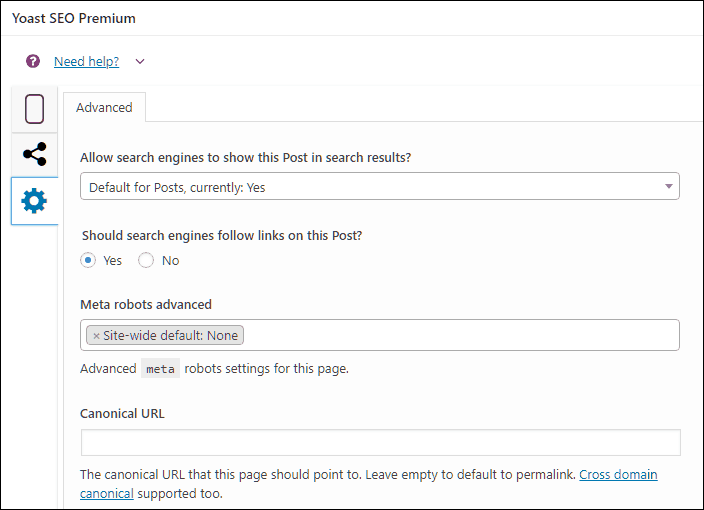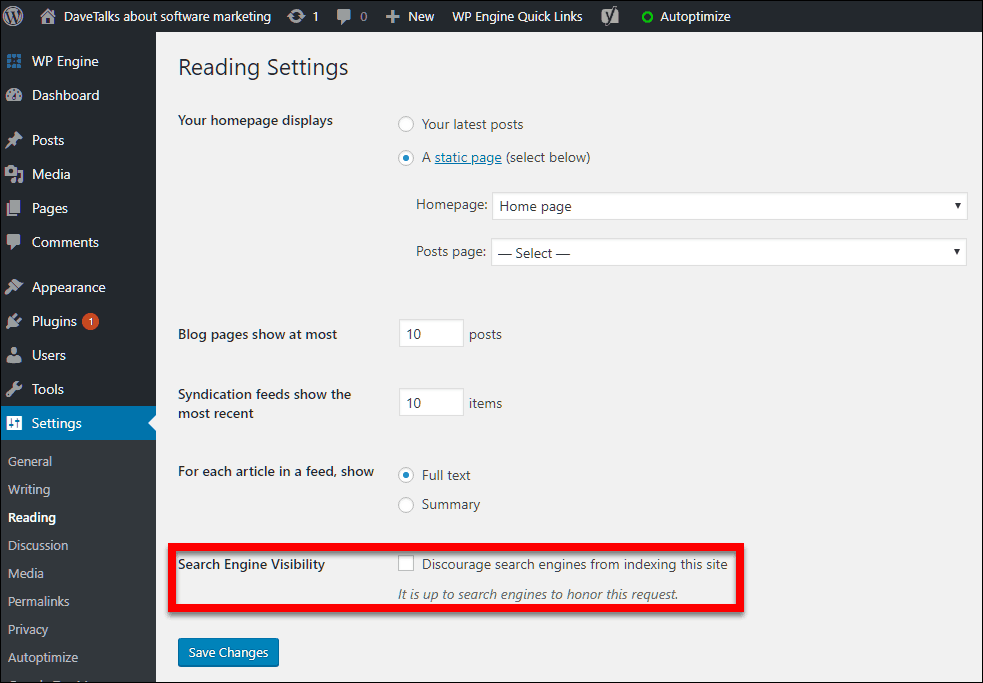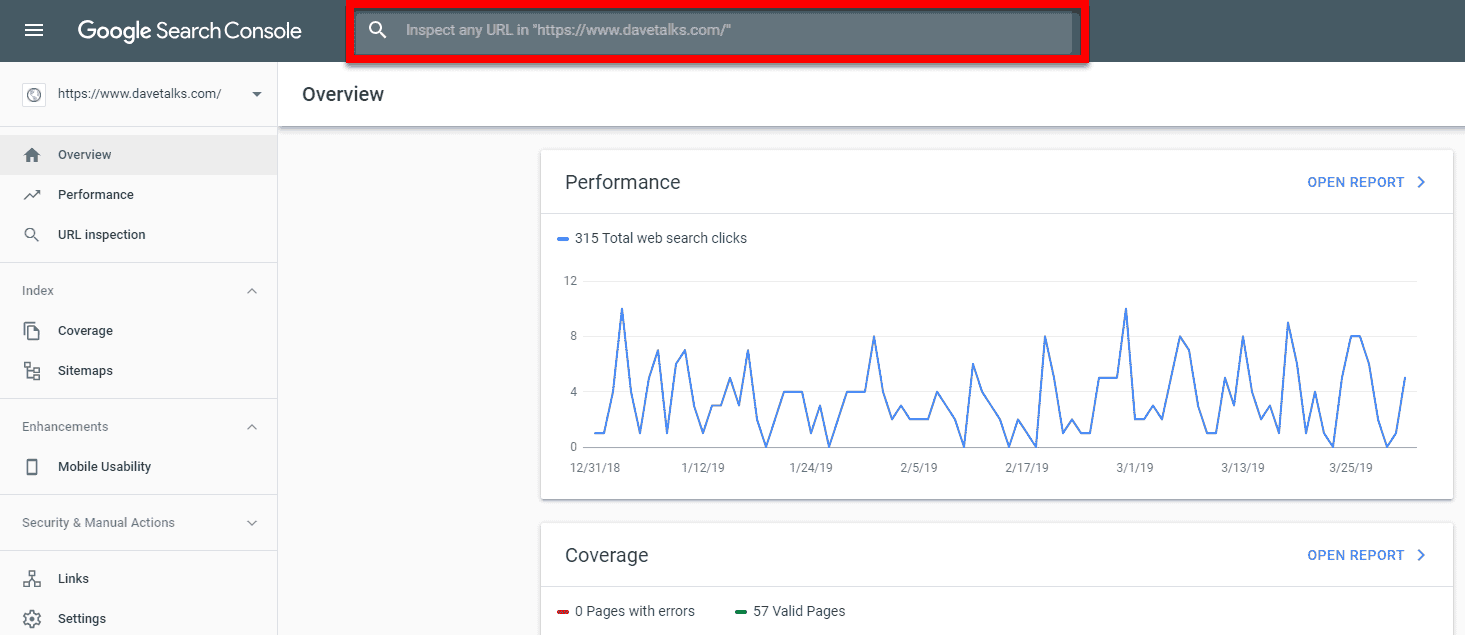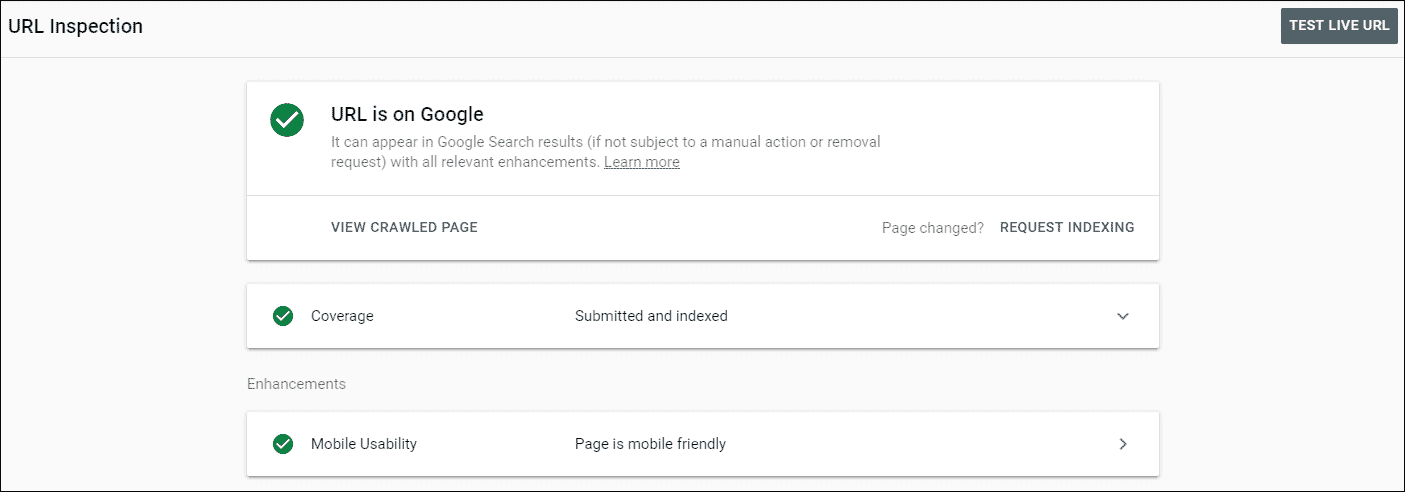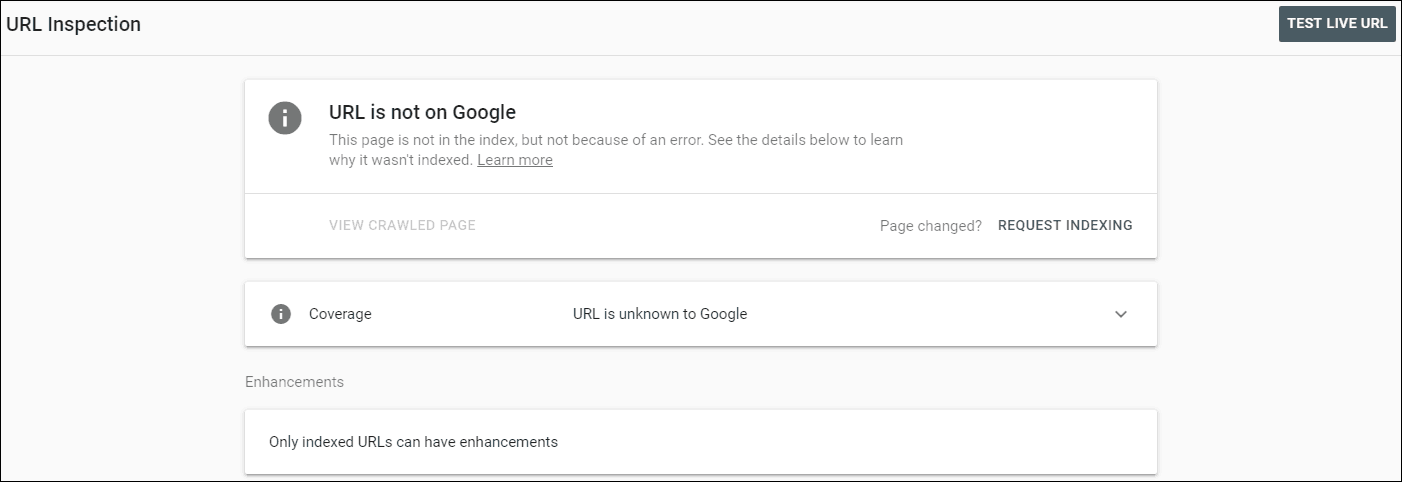You know that blog post? The one you poured your heart and soul into? The post that was more thorough than usual, offered great insight… the one you just knew was one of your best?
When you go to see how it’s doing in Google, expecting to see a surge of joy, you may instead you see this:

Don’t worry. Before we fix it, let’s make sure you’re not missing anything obvious. Apart from the visitors.
This post is based on a WordPress website using Yoast SEO, but if you’re using something else, you should be able to figure out the equivalent steps.
First check – are you keeping yourself out of the index?
I’ve lost track how many times I’ve seen this happen. The most common scenario is a website designer who’s careless with their tools, or perhaps a piece of content that someone took a long time to write. Either way, the offender decided that blocking the URL from Google was a good idea.
In WordPress there are a few different ways of shooting yourself in this same particular foot.
If you scroll down to the Yoast section at the bottom of the page or post, it should look like this:
While you’re at it, you might want to check the Settings – Reading section in your WordPress account too:
Second check – do Google even know about your über-content?
I’m quite a fan of the New Search Console – and their live querying is incredible!
Here’s how it works.
Log into the Google Search Console account for your website, then enter the URL in that box at the top:
If there are no problems, you should see something that looks like this:
If there’s a problem, Google will instead show you this:
Note how your icons have gone from cheerful-green to dismal grey?
Whatever the reason for your URL not being on Google, the problem should be highlighted here. So fix it before you do anything else.
Now let’s fix that content.
Albert Einstein supposedly defined insanity as “doing the same thing over and over again, but expecting different results”.
I don’t know if he actually said that, but either way it’s a great quote!
And sadly I could do well to remember it, but that’s a different matter.
How does that apply to SEO?
Well a common approach to fixing this sort of situation is to simply submit the URL for reindexing:
But don’t do it – at least not yet.
Why? Because as Einstein himself said: “showing the same content to Google over and over again but expecting different results is nuts”.
The only way to make Google sit up and take notice is to make changes.
And I don’t mean spending 60 seconds changing a word or two and breaking up some sentences and paragraphs.
I mean significantly rewriting it.
Here’s an example paragraph from one of our old pieces of content:
“Business is often associated with the dryer side of dullness, and many of us frequently refer with some distaste to “getting round to the business side of things”. But over the years some very useful methods and techniques have emerged from the “other-side”, many of which can be beneficial to all of us. After all, while we may consider much of what we do as a labour of love, we are nonetheless trying to make some money out of the whole thing as well! A good place to start is with the concept of the product life cycle.”
If you were to make token changes to the content, it might look like this:
“Business is generally associated with the dryer side of dullness. Which is why many of us frequently refer with some distaste to “getting round to the business side of things”.
Over the years though, some very useful methods and techniques have emerged from the “other-side”, many of which can be beneficial to all of us. After all, while we may consider much of what we do as a labour of love, we are nonetheless trying to make some money out of the whole thing as well! A good place to start is with the concept of the product life cycle.”
But as you can see, nothing really changes. And Google will spot this too.
But look at the rewritten version – a version took me exactly 1 minute and 45 seconds to write.
“Let’s start with a truth. Dealing with “the business side of things” is exactly the sort of task that most of us dread. And I can understand that. It sounds like an antidote to all things happy and fun.
But we shouldn’t dismiss everything that comes out of that world altogether. Because over the years some useful and important ideas have emerged from the murky world of business, many of which can actually be quite useful for you and your business.
We might love what we do, but most of us are trying to make some money out of the whole thing as well!
So for a a good starting point, let’s consider the product life cycle; something that applies to each and every one of us.”
This isn’t a fake-polish or token change.
The idea isn’t to trick Google into thinking that the content is new, but rather to actually create genuine new content.
And yes, it takes time. Which is why most people won’t do it.
But this is a big mistake, as rewriting an article or post is almost always a lot faster than creating new content from scratch.
So invest the time. And remember the golden mantra: always put human visitors before Google’s spiders.
Once your new content has been reworked, rewritten and polished to perfection, then it’s time to let Google know that you have something that’s worth looking at.
So now is the time to go and click on that beautiful REQUEST INDEXING button.
But hang on, before you pick out the bottle of Champagne to celebrate, there are a few final points to note:
A request is only a request.
Google tend to choose their wording carefully, so requesting a page to be indexed doesn’t guarantee anything. BRING THIS URL TO YOUR ATTENTION TO DO WITH AS YOU SEE FIT OR EVEN IGNORE IT COMPLETELY might be more accurate, but it doesn’t look good.
So the number of times you ask is not proportionate to the chance of success.
In other words, just asking Google to index your page isn’t going to get you there any faster.
Don’t cry wolf every single day.
As a rule, I generally request indexing only when significant changes to the content have been made, or I’ve fixed something that was broken.
But it’s a 100% certainty that if you submit multiple URLs every day, you’re not going to suddenly be swamped with new visitors from Google.
If used responsibly, this can be an effective way of bringing your content to Google’s attention.
Unique ideas for your business
The Demystifier puts practical ideas into your hands. You won't find them elsewhere. Original, actionable and insanely effective.


